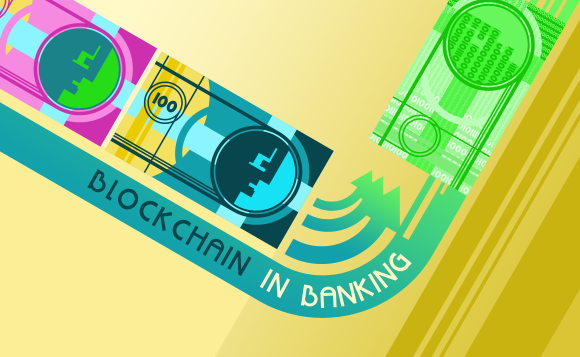
Each day, the public continues to grasp a deeper understanding of the blockchain, a technology that has received appraisal from many high-tech company officials. As many industries continue to familiarize with the technology and find viable application within their operational scope, some of these industries have been at the forefront of the blockchain wave. At the top of the list is, of course, the financial institutions. The emergence of blockchain was almost in synchrony with that of the cryptocurrency bitcoin, an electronic currency that has gained popularity across the globe.
While banking systems did not take blockchain under their wings right away, they were among the first to interact with the technology through bitcoin and other emerging cryptocurrencies. Therefore, it was imminent that tech companies and financial institutions would be the first to realize other uses of blockchain as it advanced. And they did. Today, banking systems have one of the broadest use cases for blockchain and may even be working to implement it in many other facets of their functioning. Below are some of the ways in which banking institutions utilize blockchain within their systems and functionalities.
Customer Identity
For banks and other financial institutions, knowing your customer is a fundamental step towards ensuring transparency and security for both the customer and the institution. In fact, banking systems recognize its importance so much that they created a Know Your Customer (KYC) policy. Knowing a customer’s identity can help financial institutions to carefully assess their sources of income and thereafter ensure that they are legitimate. Banks can also manage processes such as loan processing more efficient by ensuring that consumers have the ability to pay. Knowing their customers also allows banks to prevent fraudulent activities such as illegal access to bank accounts, perhaps by evaluating the location of transactions and correlating it with the known destination of the customer.
Thus far, banking systems have been using database systems to store and update consumer information. However, they are looking into implementing blockchain into this functionality in order to ensure a high-level security of information. Thanks to the transparency and robust nature which blockchain offers, banks are working to implement a new kind of customer database that implements it into its workings.
Speeding up Payment and Settlements
When it comes to money transfer, the online community has been on a rise, with the provision of various software and applications, which enable secure money transfer. The problem with the existing systems is that they are typically slow and may usually lead to incurred costs for the customers. Things are even more complex when it comes to changing locations and currencies, and the processes become more vigorous, and therefore, slower.
Blockchain technology offers banking institutions with a real-time solution that can be used to transfer money or make payments through the internet. Being a distributed ledger, blockchain allows real-time updates during money transfer processes, thereby speeding up the process significantly and enabling faster money transfer capabilities through various interfaces.
Smart Contracts
Smart contracts work by enforcing a certain set of criteria or preconditions for a certain business transaction. Using blockchain, smart contracts ensure that crucial processes such as money transfer only occur once the defined requirements have been achieved. By this operation, blockchain makes smart contracts reliable, thereby enforcing transparency within financial institutions. Smart contracts also offer a level of automation, though not fully. However, they allow users to concentrate on the main issues while aspects such as calculation and payment execution are automated.
Streamlining Global Market Processes
When it comes to global market trade, nothing is as tedious as the amount of paperwork, which is involved in order to carry out transactions. In fact, most of the time taken to complete global transactions usually involve the examination and validation of various documentation such as contracts, insurance documents, and letters of credit. This process of carrying out lengthy document examination is unreliable and can often lead to friction between business partners who are in different localities.
The introduction of blockchain into global markets enables these processes to be streamlined, allowing oversight in real time by all parties involved in the trade deals taking place. An article from IBM’s Universal Payments and Marketing sector calls blockchain a shared version of the truth when it comes to international trade relations. Because all parties are dealing with one document, the completion of contract deals and factors such as licensing agreements across the globe becomes easier, faster and more convenient than the traditional systems that are in place.
Convenient Share Trading
Share trading has picked up globally as a viable means for long-term investments for both individuals and companies. The systems that enable share trading, however, are currently very difficult to keep up with and are sometimes unreliable and slow. Blockchain provides a platform technology that streamlines the processes for share trading to be more dependable and robust while speeding up transaction rates and maintaining transparency.
It is no doubt that blockchain technology has had a significant impact on the financial structures that have been in place for a long while. With the digitization of aspects such as currencies and property ownership documentation on the rise, blockchain technology is sure to make a solid mark on financial institutions in even more ways in the coming future. The application areas, which are being witnessed today, are also likely to advance and become even more reliable as the technology is improved upon over time.


